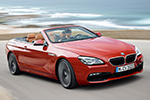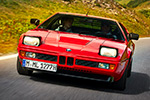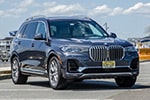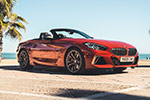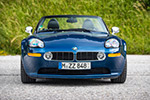When the BMW Nazca M12 was unveiled at the 1991 Geneva Motor Show, it didn’t just turn heads—it completely stole the spotlight. While production models from mainstream automakers filled the show floor with sensible updates and evolutionary tweaks, the Nazca M12 looked like something beamed in from another planet. And to many observers, it felt like the long-anticipated spiritual successor to the legendary BMW M1 (E26) had finally arrived.
That assumption wasn’t without reason. The M12’s designer, Fabrizio Giugiaro, was the son of Giorgetto Giugiaro, the man behind the M1’s iconic wedge. The design DNA echoed that connection—low-slung, mid-engined, and unapologetically exotic—but the Nazca pushed things even further.
Carbon Fiber Dreams
The stats alone sounded more like a Le Mans prototype than a road car: 4.37 meters long, almost 2 meters wide, and a mere 1.10 meters tall. But it wasn’t just the proportions that stunned. The entire body was crafted from carbon fiber, a material still years away from becoming mainstream in road cars. That kept the M12’s weight down to just 1,100 kilograms, contributing to a staggering drag coefficient of 0.26—a figure most sports cars today would still envy.
And then there was the canopy. Access to the cockpit came via a two-part door system: a conventional lower door and a gullwing-style upper window, both hidden beneath a vast sheet of curved glass that offered 360-degree visibility. It felt less like a car and more like a road-legal fighter jet. Or at least, something designed for a track on Mars.
V12 Power and Unrealized Promise
Tucked behind the two seats sat BMW’s silky-smooth M70 V12, borrowed from the 750i and 850i Coupé. It displaced 5.0 liters, made 300 horsepower, and sent power through a six-speed manual gearbox. Thanks to the car’s low weight and clean aero, the Nazca M12 could sprint toward 297 km/h (184 mph)—just a hair shy of the magic 300 km/h mark. But in 1991, that kind of performance wasn’t just impressive—it was borderline mythological.
It all looked and sounded like a green light waiting to happen. But that light never came. The M12, for all its presence and promise, remained a one-off concept car.
The Evolution: C2 and C2 Spider
The story didn’t stop there. A few months later, BMW and Italdesign unveiled the Nazca C2, an evolution of the M12 with subtle aero refinements and a more production-friendly look—though “friendly” is relative. In 1993, the Nazca C2 Spider followed, slicing off the roof for an open-air experience and offering even more performance via ALPINA-tuned V12s making up to 380 horsepower.
Still, despite all this development work, none of the three Nazca variants ever made it to production. BMW, cautious and business-savvy as ever, knew the market for a carbon-bodied, V12 supercar was limited—and shrinking in the face of emissions and economic pressure. At least one example reportedly found its way into the hands of the Sultan of Brunei, but the rest were confined to concept halls and press kits.
From Concept Hall to Museum Floor
Late last month, the Nazca M12 quietly reemerged at BMW Group Classic in Munich, where it sat for a few days among other legends of the brand. We were lucky enough to film it there. Today, you can see it for yourself at the BMW Museum in Munich, where it now resides as part of the Belle Macchine exhibition.











































